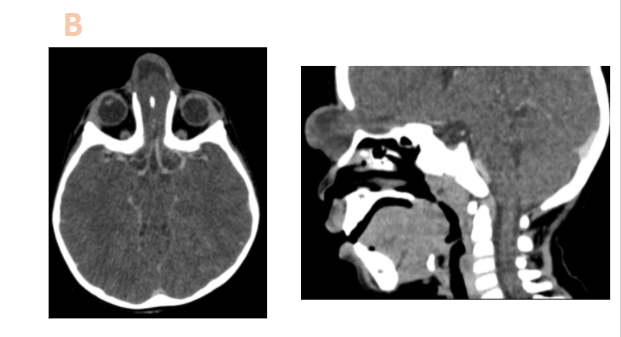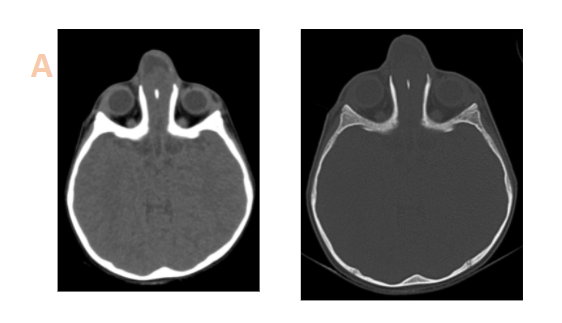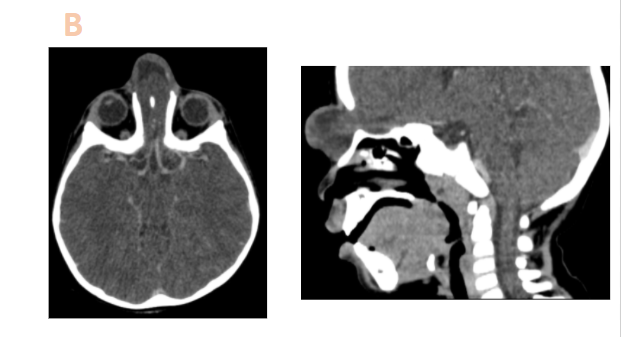2 year old with swelling over nasal bone area, increasing in size since birth.
A midline defect in the frontal bone is likely through an unobliterated fonticulus frontalis with herniation of anterior frontal lobes through it with surrounding CSF.
DIAGNOSIS:
NASO-FRONTAL ENCEPHALOCELE
DISCUSSION:
- Developmental midline nasal masses in children are rare; they result from a failure of embryologic separation of neuroectodermal and ectodermal tissues during the development of the nose and frontobasal region.
- Brain tissue that is trapped in the nose during embryologic development usually results in either a type of sincipital encephalocele or a nasal glioma.
- Encephaloceles contain brain tissue of varied signal intensities at MR imaging as well as spaces that are filled with cerebrospinal fluid. Nasal gliomas represent heterotopic or dysplastic brain tissue that are not surrounded by fluid communicating with the subarachnoid space and can thus be distinguished from encephaloceles.
- Tissues harbored in encephaloceles are nonfunctional and may be resected with no adverse consequences. Encephaloceles have a direct connection to the intracranial cavity, and this connection must be obliterated to avoid potential future meningitis and abscess formation.
- The neurodevelopmental outcome depends on the state of the brain and the size of the encephalocele; larger lesions generally are accompanied by more numerous intracranial anomalies and incur a worse prognosis.
Differentials:
- Nasal glioma
- Nasal dermoid
- Hemangioma
- Lipoma
References:
- Congenital and Acquired Lesions of the Nasal Septum: A Practical Guide for Differential Diagnosis; Mar?´a P. Valencia, Mauricio Castillo
- https://radiopaedia.org/articles/nasal-encephalocele-1
Dr Vikas H P
DNB resident
Manipal Hospital, Yeshwanthpur



